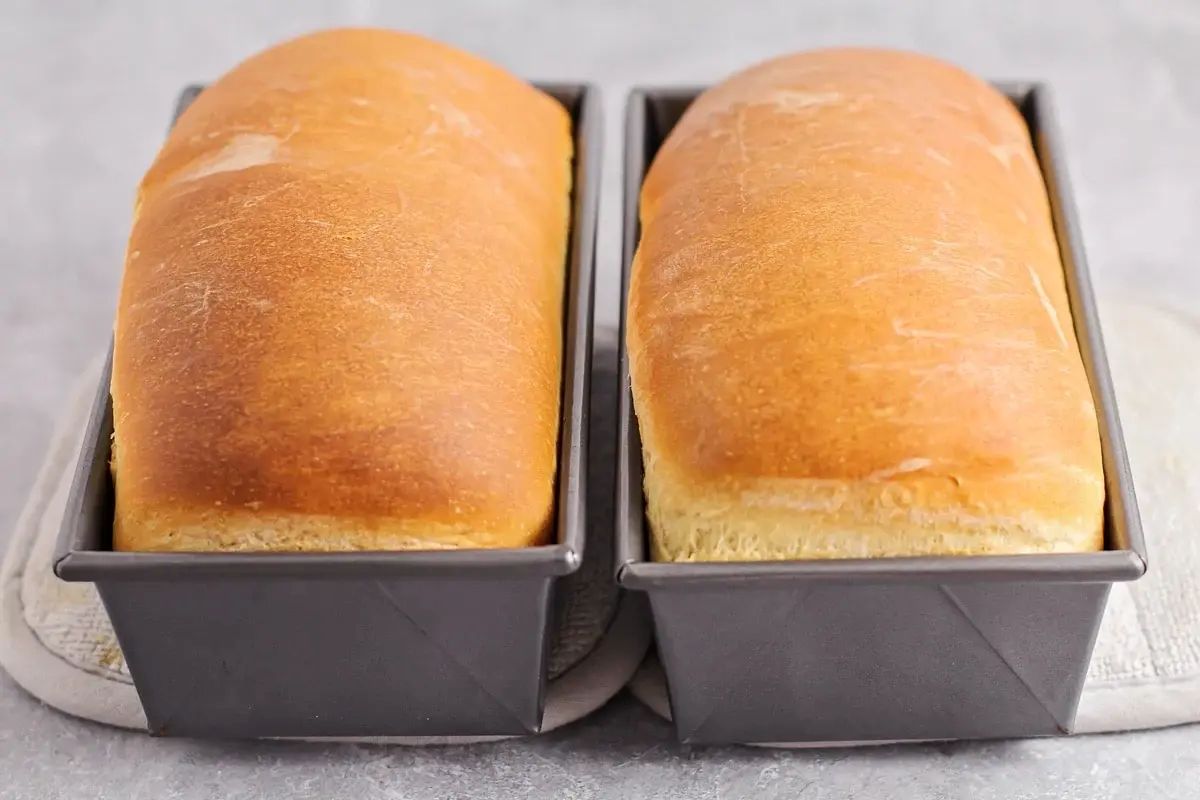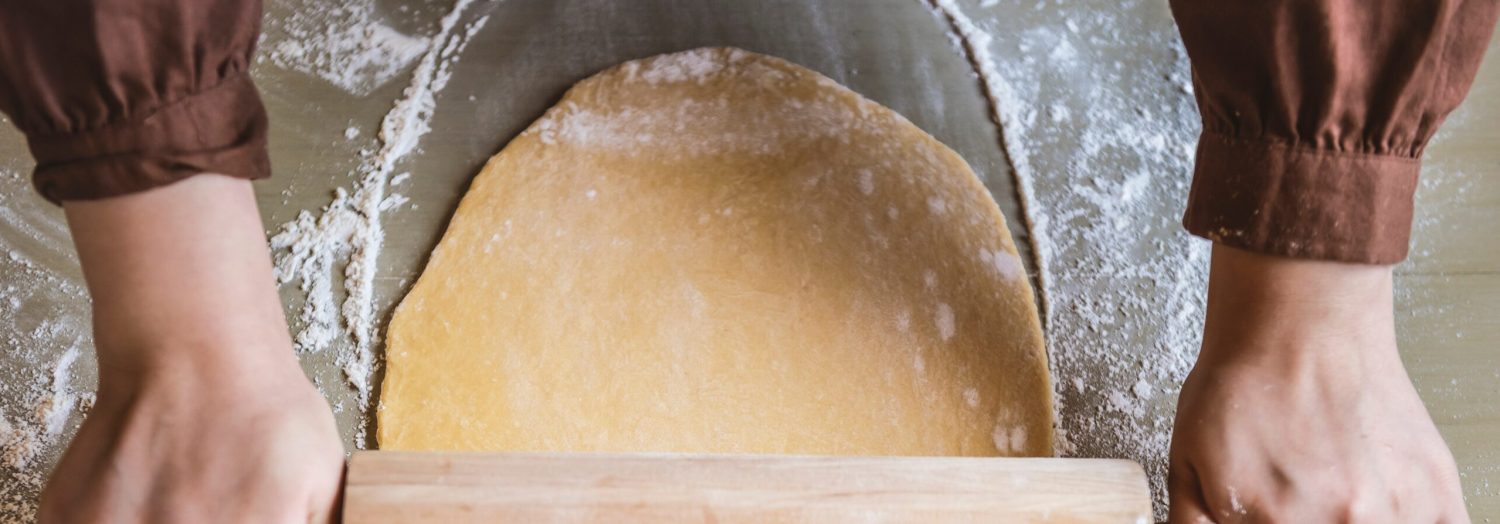Making traditional white bread at home is such a comforting experience. I love how simple ingredients come together to create something warm and fresh that fills the whole kitchen with a wonderful smell. I hope you enjoy baking this as much as I do—it’s a great way to feel proud of what you’ve made from scratch.
Most of the ingredients for this traditional white bread recipe are probably already in your kitchen, like flour, sugar, and salt. The one you might need to pick up at the store is active dry yeast, which helps the bread rise and get fluffy. When you buy yeast, make sure it’s fresh and stored in a cool place so your bread turns out just right.

Ingredients For Traditional White Bread Recipe
All-purpose flour: The main ingredient that gives the bread its structure and texture.
Sugar: Adds a touch of sweetness and helps activate the yeast.
Salt: Enhances the flavor and controls yeast activity.
Active dry yeast: The key ingredient that makes the dough rise and become fluffy.
Warm water: Activates the yeast and helps bring the dough together.
Vegetable oil: Keeps the bread soft and adds moisture.
Technique Tip for Baking This Bread
One of the most important steps in this Traditional White Bread Recipe is kneading the dough. Kneading might sound tricky, but it’s really just about working the dough with your hands until it feels smooth and stretchy. Here’s how you can do it:
- Sprinkle a little flour on a clean surface so the dough doesn’t stick.
- Put the dough on the floured surface and press it down with the heels of your hands.
- Fold the dough over itself, then push down and away again.
- Turn the dough a little and repeat this folding and pushing motion.
- Keep going for about 10 minutes until the dough feels soft, smooth, and a bit stretchy.
Kneading helps the gluten in the flour develop, which is what gives bread its chewy texture and helps it rise well. If you don’t knead enough, the bread can turn out dense or crumbly. But if you knead too much, it might get tough, so finding that smooth, elastic feel is the sweet spot.
When I first tried kneading, I thought I had to do it super fast or really hard, but that just made my arms tired! Now I take my time and enjoy the process—it’s kind of relaxing, actually. Also, if the dough sticks too much, just add a little more flour on your hands or the surface, but don’t add too much or the bread might get dry.
Kneading might seem like a small step, but it really makes a big difference in how your bread turns out. Plus, it’s fun to feel the dough change right under your hands as you work it. Give it a try, and you’ll see how much smoother baking feels when you get this part just right!
Suggested Side Dishes
Alternative Ingredients
all-purpose flour - Substitute with whole wheat flour: Whole wheat flour adds more fiber and nutrients, though it may result in a denser bread.
all-purpose flour - Substitute with bread flour: Bread flour has a higher protein content, which can give the bread a chewier texture and better structure.
sugar - Substitute with honey: Honey adds a natural sweetness and can help retain moisture in the bread.
sugar - Substitute with maple syrup: Maple syrup provides a unique flavor and sweetness, though it may slightly alter the bread's color.
salt - Substitute with sea salt: Sea salt can offer a more complex flavor profile compared to regular table salt.
active dry yeast - Substitute with instant yeast: Instant yeast can be mixed directly with dry ingredients and may result in a faster rise.
active dry yeast - Substitute with fresh yeast: Fresh yeast can provide a more robust flavor but requires different handling and measurement.
warm water - Substitute with milk: Milk can add richness and a softer crumb to the bread.
warm water - Substitute with buttermilk: Buttermilk adds a tangy flavor and can make the bread more tender.
vegetable oil - Substitute with olive oil: Olive oil adds a distinct flavor and can make the bread slightly denser.
vegetable oil - Substitute with melted butter: Melted butter can add richness and a buttery flavor to the bread.
Alternative Recipes Similar to This Bread
How to Store or Freeze Your Bread
Allow the freshly baked bread to cool completely on a wire rack. This prevents condensation from forming inside the storage container, which can make the bread soggy.
For short-term storage, place the bread in a bread box or wrap it in a clean kitchen towel. This keeps the crust crisp while maintaining the soft interior. Store at room temperature for up to 3 days.
For longer storage, wrap the bread tightly in plastic wrap or aluminum foil. This helps retain moisture and prevents the bread from drying out. Store in the refrigerator for up to a week.
To freeze, slice the bread first. This allows you to take out only what you need without defrosting the entire loaf. Wrap each slice or the entire loaf in plastic wrap, then place it in a resealable freezer bag. Squeeze out as much air as possible before sealing to prevent freezer burn.
Label the freezer bag with the date to keep track of freshness. Bread can be frozen for up to 3 months.
When ready to enjoy, thaw the bread at room temperature. For a quick thaw, use a microwave on a low setting or gently warm in an oven preheated to 350°F (175°C) for a few minutes.
To revive the crust's crispness after thawing, lightly mist the bread with water and bake in a preheated oven at 350°F (175°C) for about 5-10 minutes.
How to Reheat Leftovers
Preheat your oven to 350°F (175°C). Wrap the leftover bread in aluminum foil to prevent it from drying out. Place it directly on the oven rack and heat for about 10-15 minutes until warm and soft.
For a quick fix, use a microwave. Wrap the bread in a damp paper towel and place it on a microwave-safe plate. Heat on medium power for about 10-20 seconds. Be cautious, as microwaving too long can make the bread chewy.
If you have a toaster oven, it's perfect for reheating. Set it to 325°F (160°C), place the bread inside, and heat for about 5-7 minutes. This method gives a nice crisp to the crust while keeping the inside soft.
For a stovetop method, use a skillet. Heat the skillet over low heat, place the bread in the skillet, and cover with a lid. Let it warm for about 2-3 minutes on each side. This method adds a slight toastiness to the bread.
If you have a steamer, it's a gentle way to reheat. Place the bread in the steamer basket, cover, and steam for about 5 minutes. This method helps retain moisture, making the bread soft and fluffy.
Essential Tools for Baking This Bread
Mixing bowl: A large bowl used to combine the dry ingredients and later the wet ingredients to form the dough.
Measuring cups: Essential for accurately measuring the flour and water to ensure the correct dough consistency.
Measuring spoons: Used to measure smaller quantities of ingredients like sugar, salt, and yeast.
Wooden spoon: Useful for initially mixing the ingredients together before kneading.
Floured surface: A clean, flat area dusted with flour to prevent the dough from sticking while kneading.
Loaf pan: A greased pan where the dough is placed to shape and bake the bread.
Wire rack: Used for cooling the bread evenly after baking to prevent it from becoming soggy.
Oven: Preheated to the correct temperature to bake the bread until golden brown.
Kitchen towel: Used to cover the dough while it rises, keeping it warm and preventing it from drying out.
Pastry brush: Handy for greasing the bowl and loaf pan with oil to prevent sticking.
How to Save Time on Making This Bread
Measure ingredients in advance: Prepare all ingredients like flour, sugar, and yeast before starting to streamline the process.
Use a stand mixer: Save time by using a stand mixer with a dough hook to mix and knead the dough instead of doing it by hand.
Warm environment: Speed up the rising process by placing the dough in a slightly warm oven or near a warm spot in your kitchen.
Preheat the oven early: Start preheating the oven while the dough is in its final rise to ensure it's ready when you are.

Traditional White Bread Recipe
Ingredients
Main Ingredients
- 4 cups all-purpose flour
- 1 tablespoon sugar
- 2 teaspoon salt
- 1 tablespoon active dry yeast
- 1.5 cups warm water
- 2 tablespoon vegetable oil
Instructions
- 1. In a large mixing bowl, combine the flour, sugar, salt, and yeast.
- 2. Add the warm water and vegetable oil. Mix until a dough forms.
- 3. Knead the dough on a floured surface for about 10 minutes, until smooth and elastic.
- 4. Place the dough in a greased bowl, cover, and let it rise in a warm place for about 1 hour, or until doubled in size.
- 5. Punch down the dough and shape it into a loaf. Place it in a greased loaf pan.
- 6. Cover and let it rise again for about 30 minutes, or until doubled.
- 7. Preheat the oven to 375°F (190°C). Bake the bread for 30 minutes, or until golden brown.
- 8. Remove from the oven and let it cool on a wire rack before slicing.
Nutritional Value
Keywords
More Amazing Recipes to Try 🙂
- Butter Recipe20 Minutes
- Roasted Beets with Feta Recipe55 Minutes
- Twenty-Four Hour Salad Recipe24 Hours
- Dressing for Potato Salad Recipe10 Minutes
- Greek Lemon Chicken Soup Recipe40 Minutes
- Eastern North Carolina BBQ Sauce Recipe20 Minutes
- Eye of Round Roast Recipe1 Minutes
- Cranberry Gelatin Salad Recipe20 Minutes


Leave a Reply